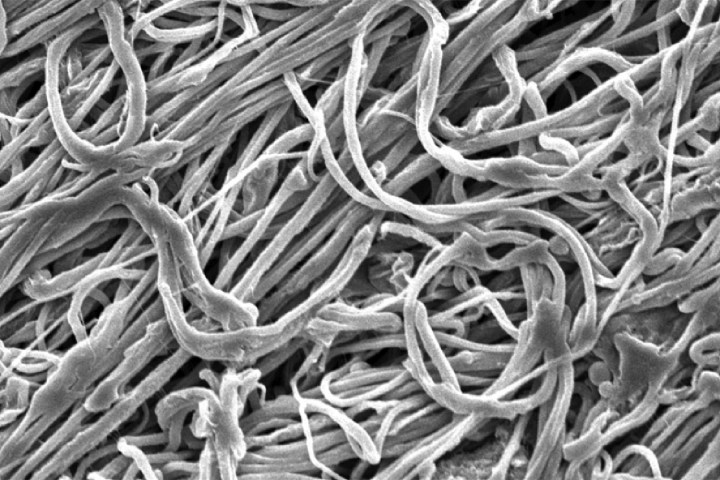
Now researchers at the Massachusetts Institute of Technology (MIT) have developed their own next-generation tough material: polyethylene nano-fibers, which possess astonishing levels of strength and toughness, despite being just billionths of a meter thick.
“Stiff, strong, and tough ultrafine polethylene fibers that rival the best high performance polymer fibers, but with diameters less than one micrometer, [have been fabricated by us] for the first time by a new process called ‘gel-electrospinning,’” MIT professor of chemical engineering Gregory Rutledge told Digital Trends. “Currently available high performance polyethylene fibers like Spectra and Dyneema are already among the stiffest and strongest fibers, on a per weight basis. However, these new fibers are one to two orders of magnitude smaller in diameter and, pound for pound, can absorb even more energy without breaking.”
The nano-fibers were created by modifying an already existing technique called gel spinning. This involves extruding a polymer gel through a die and then mechanically drawing it in a second, heated stage. In the case of the new “gel-electrospinning” process, this extrusion and drawing is carried out in a single stage using electrical forces, rather than a mechanical approach.
At present, it’s still too early to demonstrate real world applications, although Rutledge said that these may include lightweight, flexible, wear-resistant textiles and clothing, as well as soft body armor for military or civilian uses, or possible components for lightweight composites. In all of these applications, the benefit is from the inherent low density of the new fibers and their exceptional toughness, alongside their high stiffness and strength. “The performance of composites are enhanced by the high surface area of the fibers, which can improve bonding to the matrix, and the small distances between the fibers, which further promotes toughness,” Rutledge continued.
The first-of-their-kind fibers have been produced only in Rutledge’s lab at MIT, currently in very small quantities. “We have many challenges to solve before they can be scaled up for commercial production, but we are working on it,” he said. “The gel-electrospinning process is an important step in this direction.”
A paper describing the work was recently published in the Journal of Materials Science.



